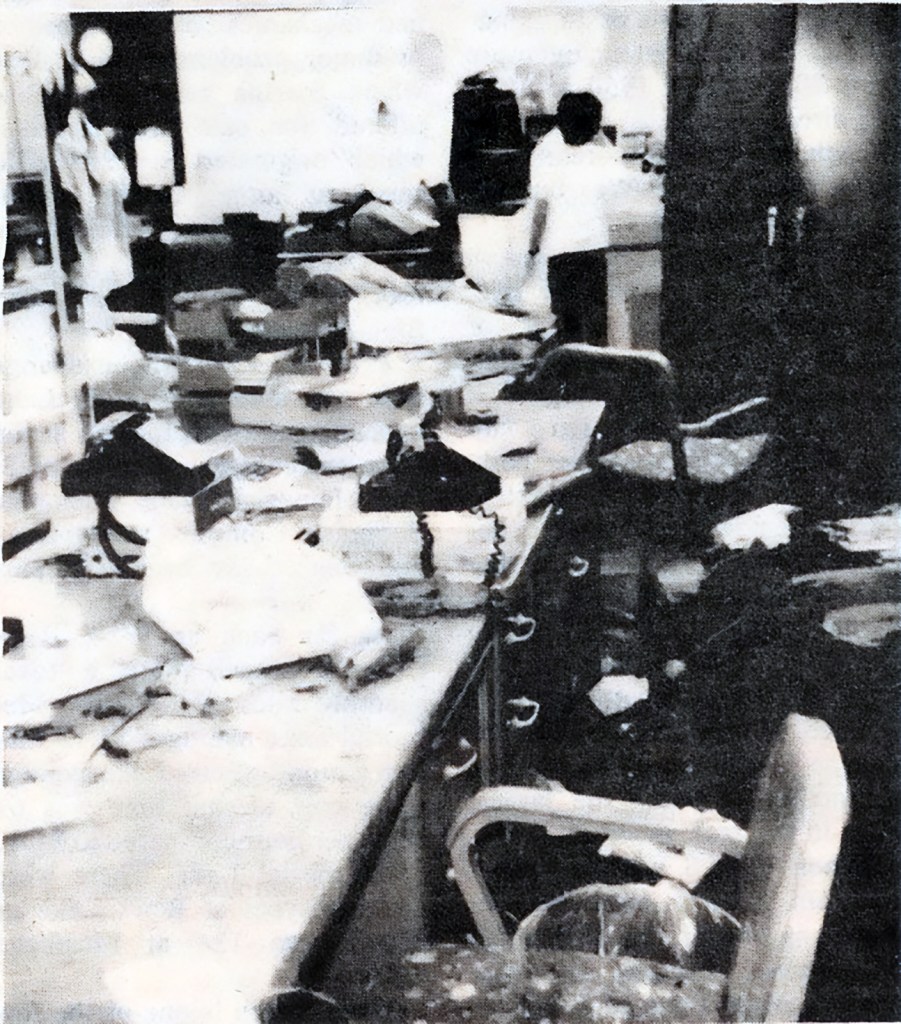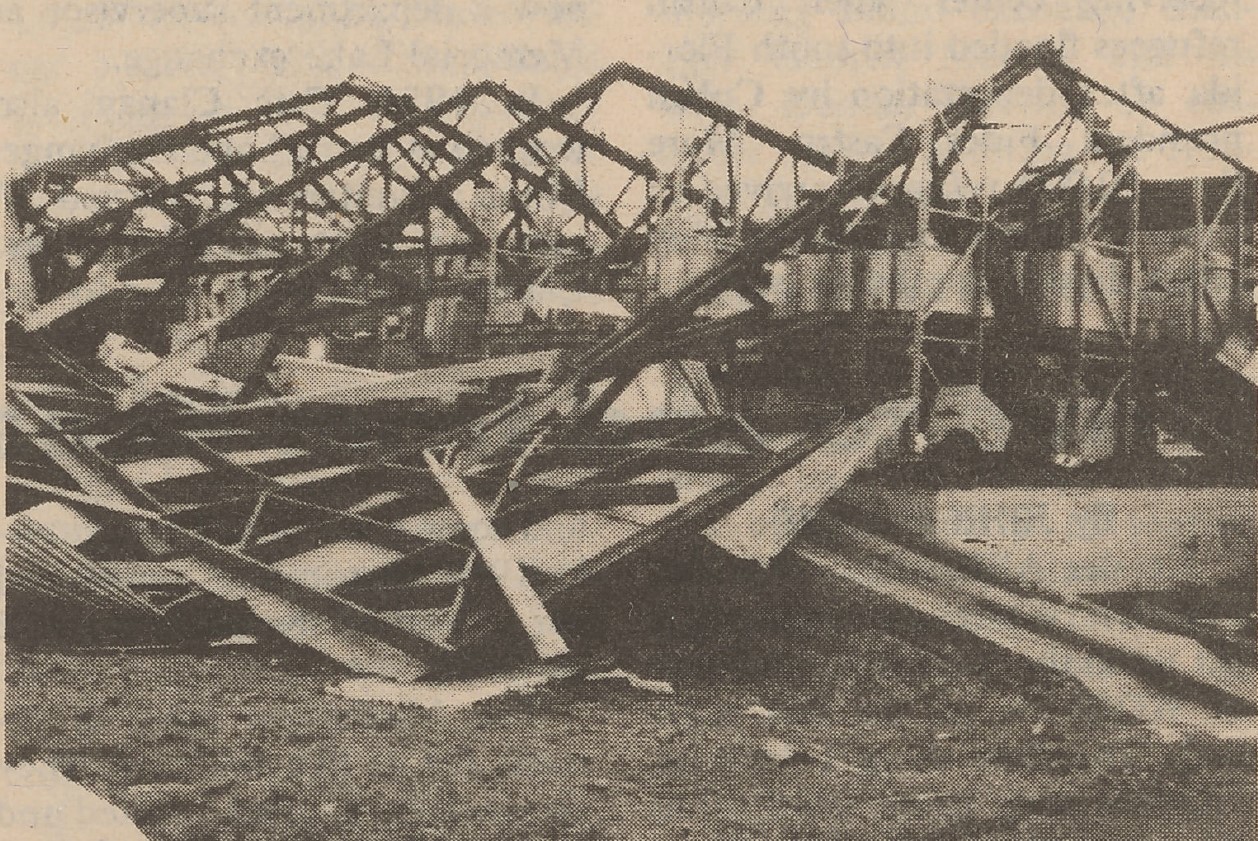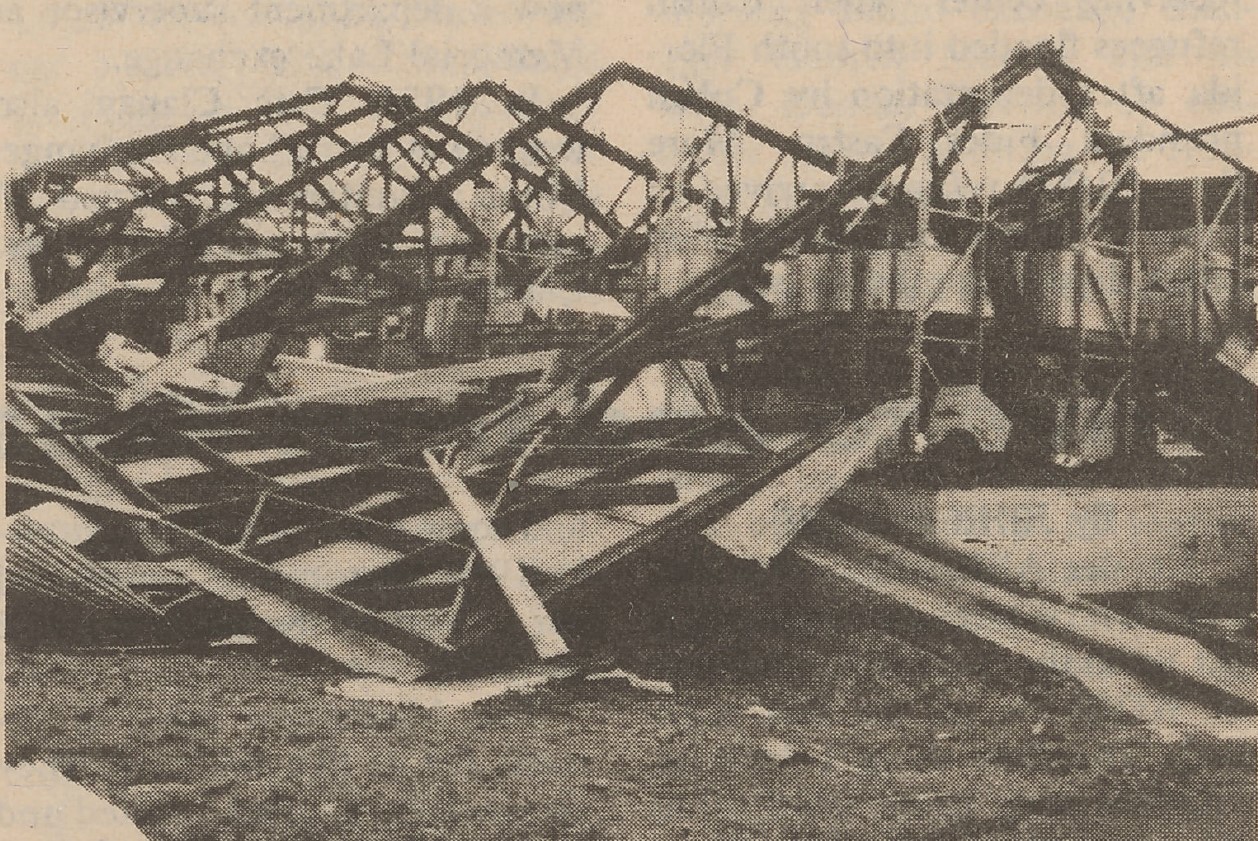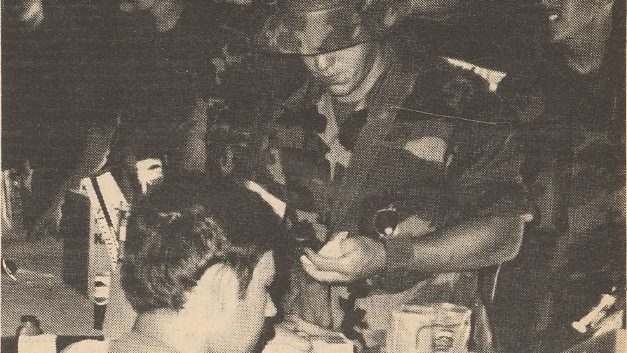Thanksgiving isn’t usually associated with hurricanes, but two days before Thanksgiving 1982, Hurricane Iwa struck Hawaii, generating winds up to 110 mph, knocking down power lines, smashing windows and tearing off roofs.
The Nov. 23 storm hit the islands of Kauai, Nihau and Oahu hardest. Six thousand residents were evacuated statewide. It was the worst storm to hit Hawaii in nearly 25 years.
In the preceding days, as the storm intensified and approached the islands, HQ-Pacific and Hawaii Area Exchange (HAAX) officials called emergency team meetings. While the storm’s progress was closely monitored, HAAX officials reviewed the Severe Storm Contingency Plan, assigned areas of responsibility to team members and set up a command post.

At main stores and Shoppettes, managers quickly prepared. Flashlights, batteries, candies, masking tape and first-aid kits were set up in a centrally located display for customer convenience.
Damages to Army facilities were estimated by the U.S. Army Western Command Public Affairs spokesman at $36 million, with $6.9 million in damages to family housing. Hardest hit was Schofield Barracks, where 17 warehouses were destroyed and 32 damaged; 11 barracks were also damaged.
An Air Force spokesman reported that damages to the industrial areas at Hickam and Wheeler AFBs and Bellows AFS were estimated at $1.58 million; and family housing damages at $400,000.
HAAX facilities suffered about a half-million dollars in damages. The Schofield Exchange was without water, power or electricity for four days. The Toyland/garden shop was destroyed, as were two-thirds of the Toyland layaway warehouse and more than two-thirds of the Military Clothing store at Schofield.

Shoppettes suffered major food losses because of power failures. The Kapalama Depot had serious roof damage on two buildings.
The Hale Koa Exchange received 5 inches of water in the stockroom area and 3 inches on the sales floor. Rugs were ruined; water soaked the baseboards and pallets causing damage to TVs, refrigerated equipment and clothing. At the shipping/receiving entrance of the store, a forklift was submerged. Associates voluntarily reported hours before reopening to begin mopping up and tallying merchandise.
At Hickam, the furniture warehouse lost a 5-by-15-foot front roof and some furniture was damaged. All ceiling tiles at the Hickam furniture store had water damage. The roof and two doors at an auto restoration center were damaged. Water damage was also reported on some layaway merchandise at the Hickam Toyland.
Associates at all stores all pitched in to help with cleanup as quickly as possible. Schofield main store and Kapalama Depot associates helped with Military Clothing store cleanup and with transferring the MCS merchandise to a Hickam warehouse. A half-million dollars in clothing had to be checked item by item for water damage.
“[Associates] loaded and hauled merchandise in trucks in adverse weather conditions,” Kevin Kull, assistant area retail manager, told the Exchange Post. “Schofield service station associates were seen helping main store workers haul and set up merchandise in tents outside the main store.”

Five tents were set up outside the Schofield main store, from which the Exchange operated a layaway pickup for Toyland merchandise and a temporary Toyland/Outdoor Living facility. Salvageable merchandise was brought to the tents and sold at a discount.
Associates contacted customers about their layaway merchandise and helped them retrieve or try to replace the merchandise that was lost from stocks at Fort Shafter and Hickam.
“The feeling of ‘ohana’ (family) … seemed evident everywhere,” Adrienne Hamada, a HAAX public information associate, wrote in the Exchange Post. “It didn’t matter what their jobs were, [associates] all pitched in to accomplish the job as quickly as possible while keeping service to their customers foremost in mind.”
Source: Exchange Post archives
.







Leave a Reply to Gary Berndt Cancel reply